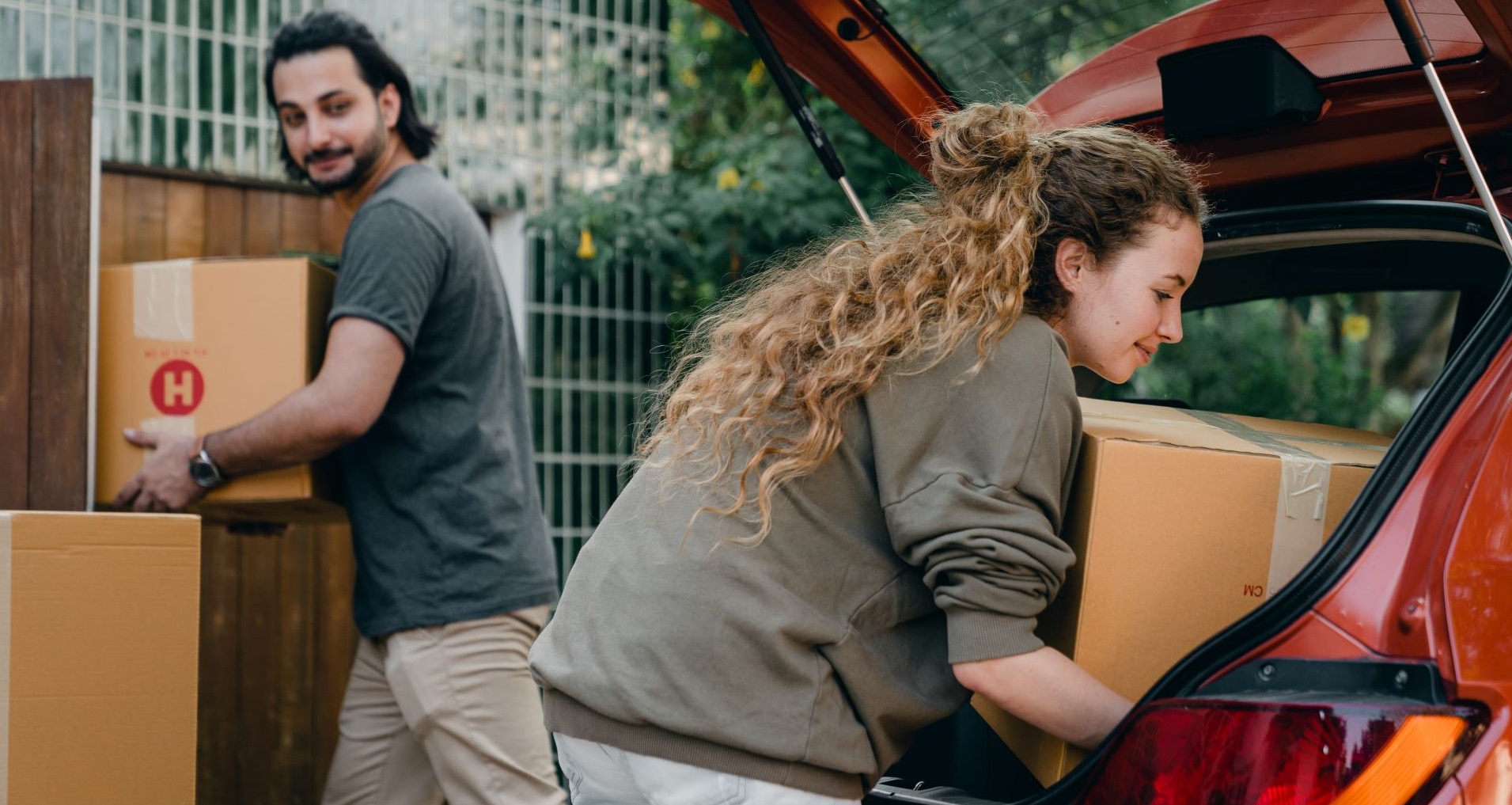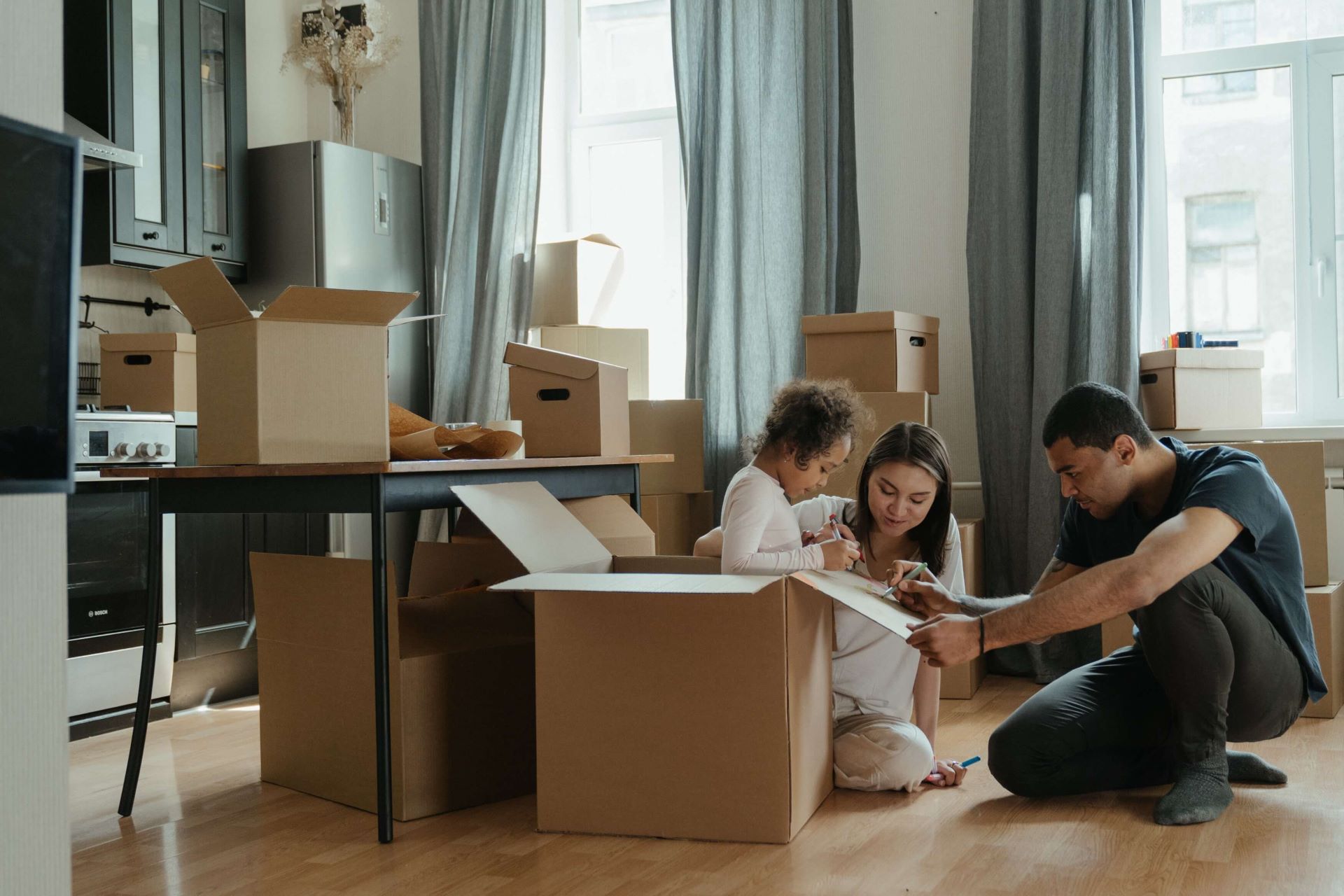Packing is undoubtedly one of the most challenging and time-consuming tasks when moving house. But with the right approach and good planning, you can pack efficiently, keep your belongings safe during transport and avoid unnecessary complications and damage. To help you enjoy a smooth and hassle-free moving process, we've prepared a list of tips on packing to move house without stress.
How to Pack for a House Move
Moving Supplies and Tools You’ll Need
- Cardboard boxes
- Moving blankets
- Packing tape
- Packing paper
- Bubble wrap
- Stretch wrap
- Marker
- Moving box fillers (e.g., foam peanuts, old newspapers, rolled-up towels or clothes)
Do I Need to Buy Moving Boxes?
Cardboard boxes designed for moving houses are made of sturdy cardboard and often have double-layered walls. But as it's estimated that each room requires at least 10-15 moving boxes (the number may differ depending on the size of each room and the items you want to pack), it can become expensive. Luckily, you can look for savings by reusing boxes you already have at home or looking for free used boxes online, at your local recycling centre, or supermarket. If you decide to reuse boxes, inspect each of them first to make sure they are in good condition.
How Long Before Moving House Should You Start Packing?
One of our most important packing tips when moving house is not to leave packing until the very last moment. Start the packing process as soon as it's convenient for you, even up to 2 months before your moving day. This will give you enough time to:
- gather the necessary packing materials and supplies,
- get rid of any unnecessary items,
- find the right packing methods for different types of items,
- secure the boxes properly,
- hire a removal van,
- address any eventual issues.
What Items Should You Pack First and Last When Moving House?
Start packing with things you are least likely to need in the time between packing and moving. These may include out-of-season clothing, books, art pieces, decorations, and items stored in different storage areas around the house (such as garages, attics and basements). On the other hand, it's best to pack essential items (e.g., medicines, everyday clothing, basic kitchen utensils and appliances, etc.) last.
Make the Necessary Arrangements Early
- If you want to move with professional movers, it's important to schedule such services in advance. This is the only way to ensure that your chosen removals company will be available on the day of your move.
- Even if you decide to move without professional services and ask friends or family members for help, it's still essential to make sure that everyone will be free on your planned moving date.
- If you have kids and/or pets, it may be a good idea to find someone to take care of them for a day. This way, you'll be able to focus on the move.

How to Secure Your Belongings for Transport
Packing for a house move is not as easy as simply filling boxes with your belongings. You need to know how to pack heavy, valuable or breakable items to avoid damaging them in the process and ensure their safe arrival at your new address. Below you'll find examples of items that require special attention during a house move, along with our packing tips.
How to Pack Delicate Items
When it comes to packing fragile items, such as glassware or art pieces, taking extra care and adding a few more layers of protective materials is essential. Choose small boxes made of sturdy cardboard and wrap each item separately with bubble wrap or packing paper. Make sure to fill any gaps left in the boxes with fillers, e.g., packing peanuts or crumpled paper, to prevent them from moving and provide additional protection. Finally, label the box as fragile to make sure it'll be handled properly.
How to Pack Electronics and Household Appliances
Modern houses are full of electronic devices such as laptops, computers, gaming consoles, TVs, coffee makers, refrigerators, washing machines, dishwashers, and many, many more. And most of the appliances you own will most likely travel with you to your new home, so knowing how to pack them properly is important. It's best to use original packaging whenever possible (when using different boxes, protect your devices with bubble wrap or towels) and follow the manufacturer's instructions for disconnecting and moving each device.
How to Pack Important Documents and Valuable Items
Things can easily go missing during a house move. Packing tips on our list can help you keep track of everything, but we advise paying especially close attention to securing important documents and any things of value (monetary or sentimental), such as jewellery, art pieces, and old books. Pack them in a separate, properly labelled box and keep it close. It may be a good idea to create a detailed inventory list of such items when packing to make sure you know where everything is.
Useful Tips on How to Pack for Moving
- Moving is a great opportunity to declutter your house. Before packing, take some time to consider whether you really need to take everything with you. It's a great moment to divide your things into those you want to keep and those you can do without. You can sell some of your belongings to get extra money or simply donate them.
- Make a house moving checklist. With so many tasks to take care of, it's easy to lose track of things. That's why it's a good idea to start house-move preparations by making a checklist of everything you need to do and pack before the moving day. This will help you remember even the less important tasks and ensure that everything is ready for the move to go ahead.
- Pack things from one room together. If you want to save time, it's best to pack in a way that will make unpacking easier. For example, by packing everything from your bedroom into boxes labelled “bedroom”, you'll be able to move them into the right room at the new address right away without having to look for individual items in random boxes.
- Use small or medium boxes. It may be tempting to reduce the number of boxes by choosing larger ones. However, it's not always the best idea. Keep in mind that a fully-packed box can be quite heavy, even if the individual items are relatively light. Big and heavy boxes are also much more difficult to carry. To keep your belongings safe and make your job of transporting them easier, it's best to choose small or medium boxes.
- Don't move heavy items on your own. Moving heavy items, e.g., household appliances or furniture, is not a task for one person. You should always have at least one helper with you to help with the heavy lifting in order to avoid damage and injury. You can also use equipment such as moving dollies or straps to make the job easier.
- Prepare an essentials box. This is the very last box you should pack. Essentials are items you use daily and you'll need right away after moving into your new house. It can include things such as medicines, a phone charger, toiletries, toothbrushes, etc.
Move Without Stress With a Professional Moving Company!
Moving can be a stressful experience, but it doesn't have to be. Avoid the stress of last-minute packing by preparing everything early and following our tips for moving house. And if you want professional help with transporting your belongings to their destination, hire a moving company. With Bright Removals Ltd, thanks to our expertise and experience with international moves, moving house from the UK to Germany (or from Germany to the UK) can be a stress-free and hassle-free process! Contact us and let us know what we can do for you!

